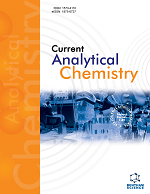
Full text loading...
We use cookies to track usage and preferences.I Understand

Over the decade many types of fluorescent sensors have been developed for detecting diverse types of analyte. The sensors developed using the phenomenon of fluorescence provide high sensitivity, selectivity, for the analyte that they are being developed for. This has led to a huge increase in development of sensors for biomarkers that are particularly of importance for early detection or diagnosis of life threatening diseases. In addition to the advantages of Fluorimetry there is continuous research going on to create sensors that are easy to construct, reproducible, cost and time efficient, along with maintaining sensitivity enough for accurate determination of the analyte of interest. As the research advanced, the dyes used as simple sensors were replaced with other molecules as a substrate for biomarker or other analyte sensing. Additionally, early scientists used single emission sensors for detection of analyte. Further, the single emission sensors were evolved to dual emission and then further advancement led to innovation of ratiometric sensors. These ratiometric sensors provide good internal standard referencing system which gives them good sensitivity as compared to other luminescent sensors. Through this review we aim to provide useful information on the subject of FRET, ratiometric fluorescence analysis, the types of materials used for developing the sensors and examples of biosensors used for enzyme detection.

Article metrics loading...

Full text loading...
References


Data & Media loading...